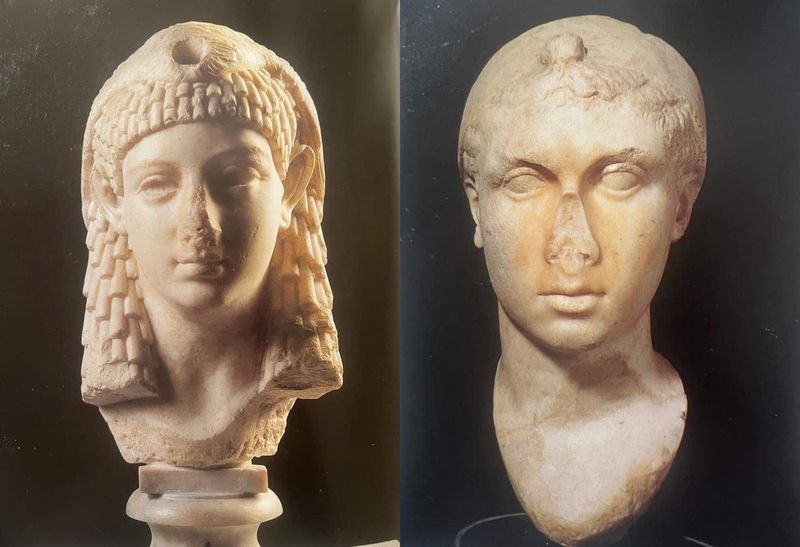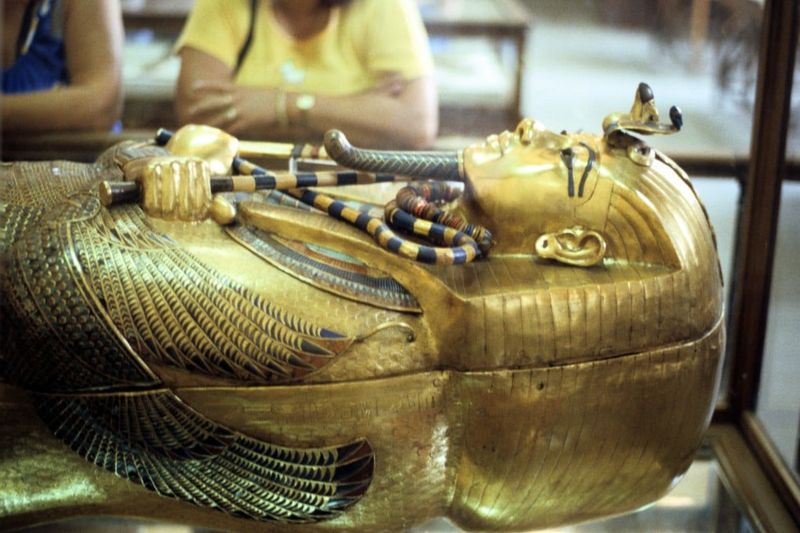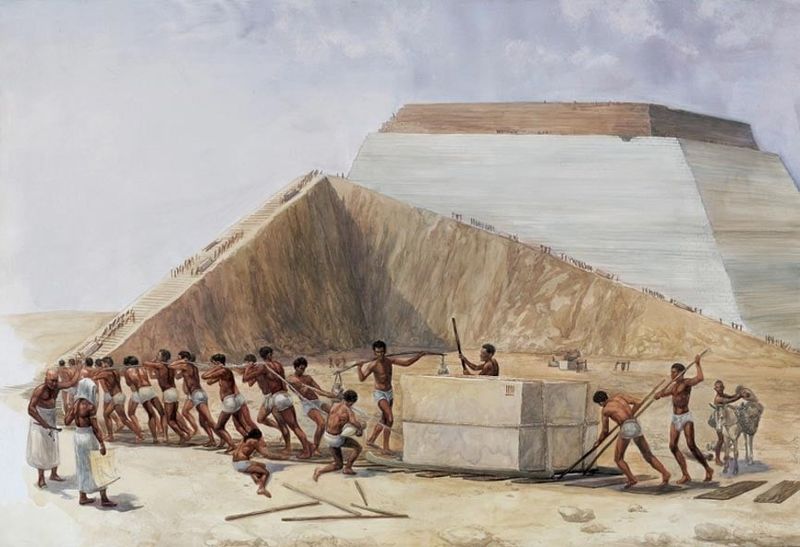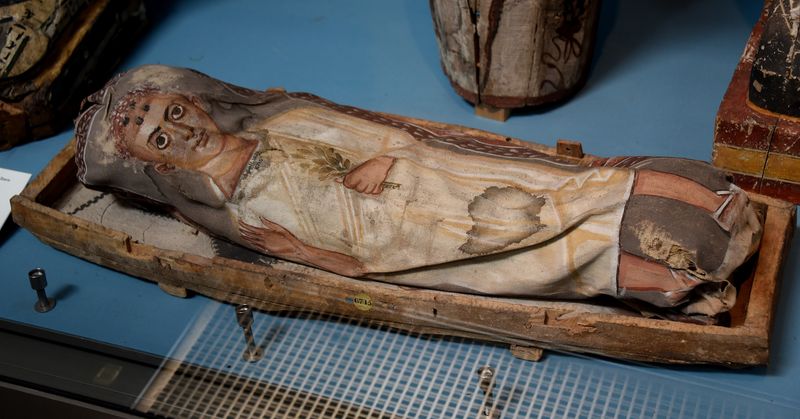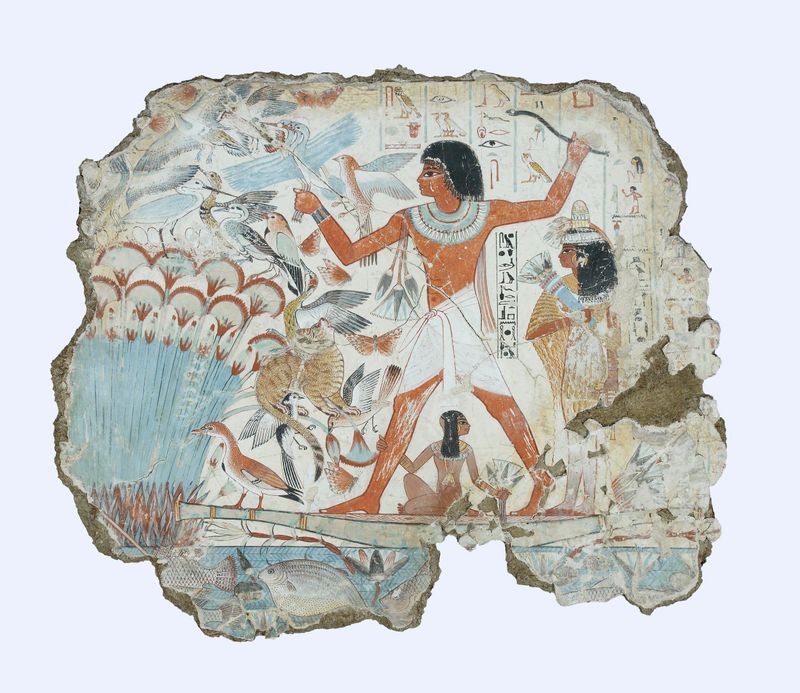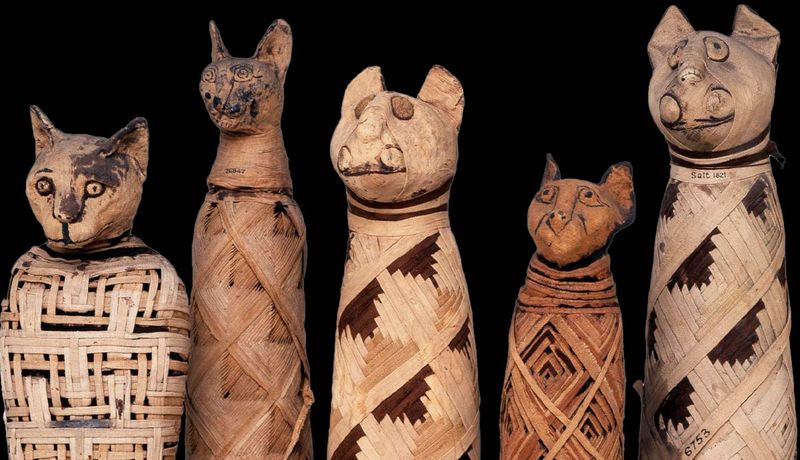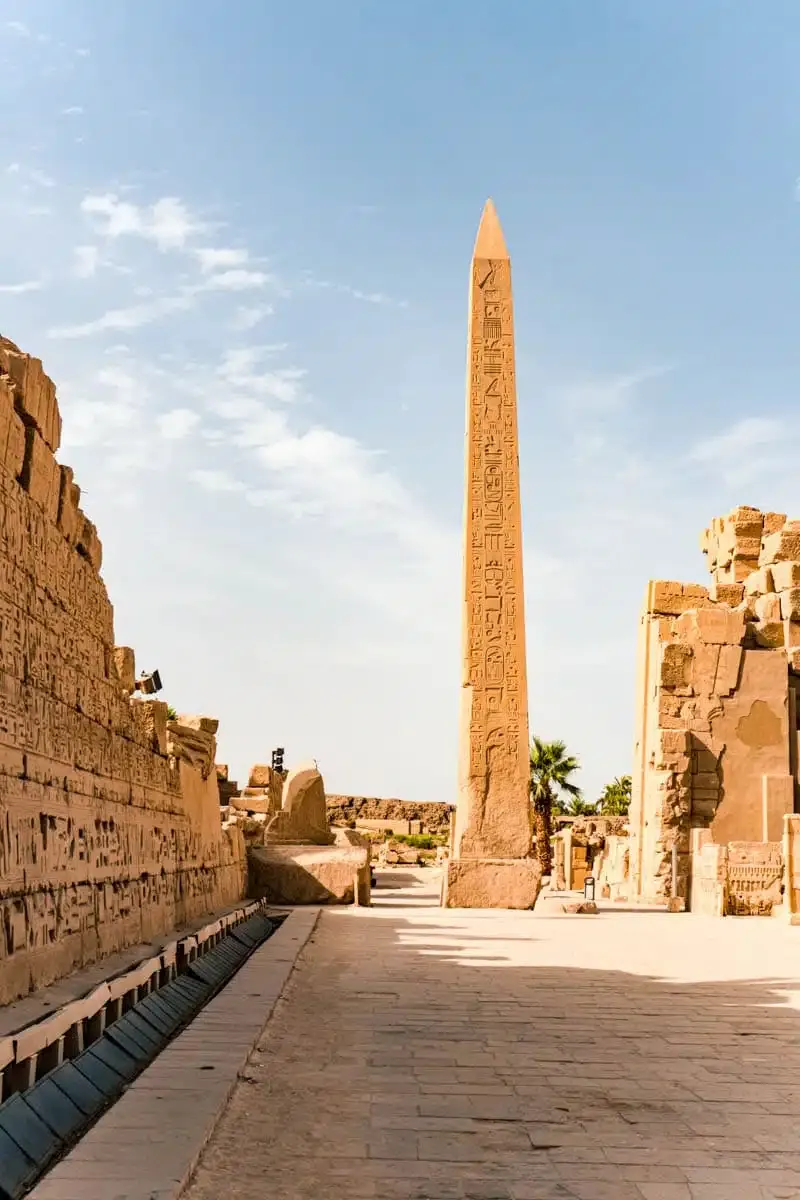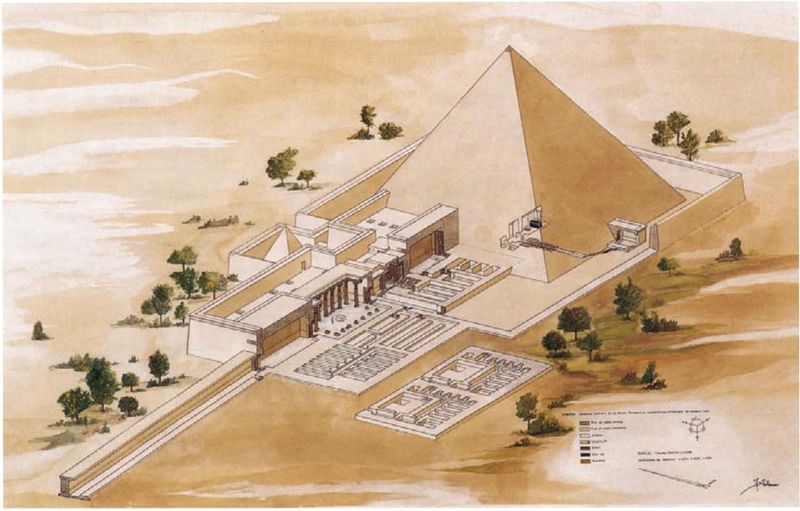Ancient Egypt continues to captivate our imagination with its towering pyramids, mysterious hieroglyphs, and elaborate burial practices. But how much of what we think we know is actually true?
Historians and archaeologists have spent decades correcting popular misconceptions about this fascinating civilization. Here are fifteen Egyptian myths that make experts cringe every time they hear them.
1. Pyramid Builders Weren’t Slaves
The image of whip-cracking overseers forcing slaves to drag massive stones persists in movies and books, but archaeological evidence tells a different story. Excavations at worker villages near the pyramids reveal the remains of well-fed laborers who received medical care.
These workers were likely farmers who worked on pyramid construction during the Nile’s annual flood when agricultural work was impossible. Their tombs near the pyramids suggest they took pride in their contributions.
Far from being slaves, they were paid laborers participating in Egypt’s most important national projects, earning respect and provisions for their families.
2. Cleopatra Was Actually Greek
Hollywood has portrayed Cleopatra as the quintessential Egyptian beauty, but she wasn’t Egyptian at all. Born into the Ptolemaic dynasty, Cleopatra VII descended from Macedonian Greeks who ruled Egypt after Alexander the Great’s conquest.
Her family maintained Greek customs, language, and rarely intermarried with Egyptians. What made Cleopatra exceptional was that she actually learned to speak Egyptian, unlike her ancestors who relied on translators.
Historically significant for her political savvy rather than her beauty, Cleopatra’s heritage reveals how multicultural ancient Egypt truly was during its later periods.
3. The Curse of the Pharaohs Is Pure Fiction
“Death shall come on swift wings to him who disturbs the peace of the king…” These ominous words never actually appeared in Tutankhamun’s tomb. The entire concept of mummy curses was largely invented by early 20th-century newspapers seeking sensational headlines.
When Lord Carnarvon died shortly after the tomb’s opening in 1922, the press went wild with curse theories. They conveniently ignored that most people present at the tomb’s opening lived long, healthy lives afterward.
Howard Carter, who first entered the tomb, lived for 17 more years despite supposedly being the curse’s primary target!
4. Hieroglyphs Were Not Magical Spells
Movies often portray hieroglyphs as mystical incantations that unleash supernatural forces when read aloud. In reality, hieroglyphs were simply the formal writing system of ancient Egypt, used for everything from tax records to love poems.
These elaborate symbols represented sounds, ideas, and determinatives that clarified meaning. Most Egyptians couldn’t even read hieroglyphs – that skill was limited to scribes who trained for years.
The magical reputation stems partly from medieval European misunderstandings and partly from Hollywood’s love of the exotic. The Rosetta Stone finally allowed scholars to prove hieroglyphs were just sophisticated writing, not mystical code.
5. Aliens Didn’t Build Anything in Egypt
The “aliens built the pyramids” theory manages to simultaneously fascinate the public and infuriate archaeologists. This notion dismisses the impressive human achievement of ancient Egyptians by suggesting their monuments required extraterrestrial intervention.
Extensive archaeological evidence shows how the pyramids were constructed using ramps, levers, and organized labor. Engineering experiments have demonstrated that period-appropriate tools and techniques could indeed move and place massive stones.
The evolution of pyramid design – including early failures and structural improvements – clearly shows a human learning curve, not alien perfection dropped from the sky.
6. Mummification Varied Widely Over Time
Pop culture presents mummification as a single, unchanging ritual, but the practice evolved dramatically over 3,000 years. Early mummies were simply bodies naturally preserved in desert sand, while the elaborate process we associate with mummies developed gradually.
During Egypt’s economic peaks, mummification could involve removing organs, drying the body with natron salt, and wrapping with hundreds of yards of linen. In poorer times or for lower-class individuals, the process might be as simple as minimal evisceration and basic wrapping.
By Roman times, beautiful painted portraits replaced traditional masks, showing how mummification adapted to changing cultural influences.
7. Napoleon Didn’t Shoot Off the Sphinx’s Nose
Blame for the Sphinx’s missing nose often falls on Napoleon’s troops, who supposedly used it for target practice in 1798. This colorful story crumbles when confronted with historical evidence – drawings from 1737, decades before Napoleon’s expedition, already show the Sphinx without its nose.
The actual culprit remains debated. Some evidence points to a 14th-century Islamic cleric named Muhammad Sa’im al-Dahr, who reportedly damaged the statue to discourage idol worship. Others suggest natural erosion or earlier vandalism.
The persistence of the Napoleon myth highlights how easily historical misinformation spreads when it makes for a good story.
8. Egyptians Celebrated Life, Not Death
The elaborate tombs, mummies, and funerary texts have created a persistent misconception that ancient Egyptians were morbidly obsessed with death. Archaeological evidence paints a completely different picture of a culture that passionately celebrated life and viewed death merely as a transition.
Tomb walls feature vibrant scenes of banquets, hunting, and family life – activities the deceased hoped to continue in the afterlife. Even funerary texts focus on living eternally, not on death itself.
Amulets, spells, and elaborate preparations weren’t about death worship but rather ensuring the continuation of life’s pleasures in the next world.
9. King Tut Was Actually A Minor Pharaoh
Tutankhamun enjoys celebrity status today, but historically, he was a relatively insignificant ruler. Ascending to the throne around age nine and dying approximately ten years later, Tut had little time to achieve anything monumental.
His primary historical significance was reversing his father Akhenaten’s religious reforms, restoring traditional Egyptian deities after the controversial Aten monotheism experiment. His fame stems entirely from Howard Carter’s 1922 discovery of his nearly intact tomb.
The spectacular treasures that survived millennia of tomb robbers created Tutankhamun’s modern fame – ironically making one of Egypt’s least important pharaohs its most recognized.
10. Cats Were Respected, Not Worshipped
Ancient Egyptians had a complex relationship with cats that goes beyond the simplistic notion that they “worshipped” them as gods. Cats were highly valued for practical reasons – they protected grain stores from rodents in an agricultural society where famine was a constant threat.
Certain feline qualities were associated with goddesses like Bastet, but Egyptians worshipped these deities, not actual cats. Cat mummification and severe penalties for harming cats demonstrated their cultural importance.
The relationship was more like our modern respect for service animals combined with religious symbolism – practical appreciation elevated to sacred status.
11. Egypt’s Architecture Goes Far Beyond Pyramids
Pyramids dominate popular perception of Egyptian architecture, yet they represent just one phase in a 3,000-year architectural tradition. The New Kingdom produced equally impressive achievements like the massive temple complex at Karnak, with its soaring columns and intricate relief carvings.
Rock-cut tombs in the Valley of the Kings demonstrate sophisticated engineering, with complex ventilation systems and protection against tomb robbers. Massive obelisks, some weighing hundreds of tons, were quarried, transported, and erected with astonishing precision.
Even ordinary houses showed architectural ingenuity, with clever designs to manage Egypt’s desert climate through natural cooling systems.
12. Egypt Was Culturally Diverse, Not Homogeneous
Movies often portray ancient Egyptians as a single, uniform ethnic group, but historical reality was far more complex. Situated at the crossroads of Africa, Asia, and the Mediterranean, Egypt was a dynamic melting pot throughout its history.
DNA analysis of mummies reveals diverse origins, while artwork shows people with varying skin tones and features. Nubians, Libyans, Canaanites, Hittites, and others all contributed to Egyptian society and sometimes ruled as pharaohs.
Even the famous Queen Nefertiti may have had foreign origins, highlighting how Egypt’s cultural strength came partly from its diversity and openness to outside influences.
13. Women Could Rule As Pharaohs
Contrary to assumptions about ancient gender roles, Egypt had several female pharaohs who ruled with full authority. Hatshepsut, perhaps the most successful, reigned for over 20 years during the 18th Dynasty, overseeing military campaigns and ambitious building projects.
Sobekneferu, Nefertiti, and Twosret also took the throne in their own right. While some female pharaohs adopted masculine imagery in royal statues and regalia, this represented the office’s divine nature rather than gender disguise.
Cleopatra VII, though of Greek descent, ruled as pharaoh and presented herself as the goddess Isis incarnate – continuing this tradition of female leadership in Egyptian history.
14. The Book of the Dead Was Customized For Each Person
Far from being a standardized religious text, the collection of spells and instructions we call “The Book of the Dead” was actually customized for each individual. Wealthy Egyptians commissioned personalized versions containing only the spells they wanted for their journey to the afterlife.
These papyri varied enormously in length, quality, and content over the 1,500 years they were in use. Some were elaborate artistic masterpieces with colorful illustrations, while others were simple text-only versions for those with modest budgets.
The name itself is misleading – Egyptians called it “The Book of Coming Forth by Day,” focusing on rebirth rather than death.
15. Pyramids Served Multiple Complex Purposes
Reducing pyramids to mere tombs misses their complex religious and political significance. These massive structures served as resurrection machines, their shape symbolizing the primordial mound of creation and the rays of the sun god Ra reaching down to earth.
Each pyramid anchored a larger complex including temples, satellite pyramids, and boat pits. These complexes functioned as perpetual religious engines where priests performed daily rituals to sustain the deceased king’s power in the afterlife.
Politically, pyramids demonstrated royal power and divine right to rule – visual propaganda visible for miles, reinforcing the pharaoh’s status as intermediary between gods and humans.


